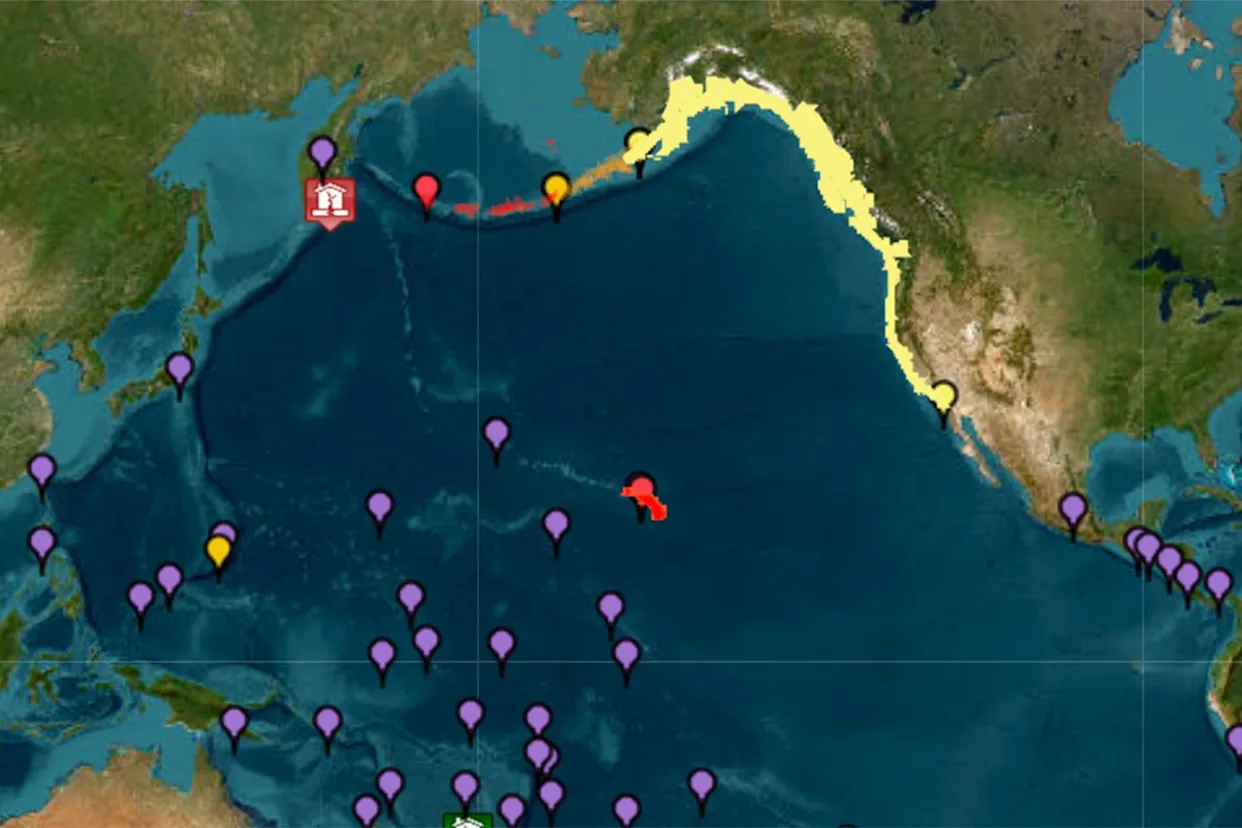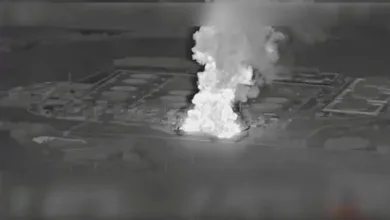Hawaii Gripped by Panic as Tsunami Warnings Trigger Massive Evacuations

The quiet calm of the Hawaiian morning was shattered when tsunami sirens began to wail across coastal towns, warning residents and tourists alike to leave low‑lying areas immediately. The alerts followed the powerful 8.8‑magnitude earthquake off Russia’s Kamchatka Peninsula, raising fears of destructive waves sweeping across the Pacific.
Within minutes, roads were choked with cars as thousands fled inland. Social media feeds flooded with images of traffic jams, emergency broadcasts, and anxious families gathered at higher ground. For many, it was a chilling reminder of nature’s unpredictable power.
Chaos and Coordination
In the hours that followed, the Hawaiian government activated emergency protocols honed over years of disaster planning. Volunteers and officials directed people toward shelters, while first responders worked to keep evacuation routes clear.
Yet the sheer volume of people trying to move at once created what local officials later described as “over‑evacuation.” Major highways clogged, leaving some drivers stranded for hours. News outlets like foxnews and local stations broadcast updates urging patience and calm.
Despite the confusion, experts credited training and drills with preventing more dangerous panic. Public messaging stressed the importance of staying away from beaches and rivers, even if the initial waves seemed small.
How Hawaii Prepared for the Worst
Tsunami preparedness in Hawaii is a delicate balance between urgency and overreaction. Officials constantly remind residents that even modest waves can destroy harbors, flood hotels, and endanger lives.
Schools, businesses, and tourist resorts practice evacuation plans regularly. On this occasion, those preparations likely saved lives, ensuring that people knew where to go and what to do.
The event also tested improvements made in recent years to Hawaii’s early warning systems—upgrades introduced after public criticism of past false alarms.
Tourism Takes a Hit
Hawaii’s economy depends heavily on tourism, and the images of gridlocked roads and sirens quickly spread worldwide. Some travelers canceled plans, and local businesses braced for losses.
Economists from federalreserve research groups warn that even short disruptions can cost the islands millions. Beyond the immediate economic impact, officials face the challenge of restoring confidence that Hawaii remains a safe destination.
Trump and Political Reactions
Former President donaldtrump issued a brief statement praising Hawaii’s residents for their “discipline and strength” and urging them to follow official instructions.
His comments were discussed on thefive and other media platforms, with some conservative voices suggesting the crisis highlighted the need for more infrastructure funding. Others criticized past administrations, including trump, for underinvesting in coastal defenses.
The debate quickly became part of wider us politics conversations about disaster funding, climate change, and national preparedness.
The Science Behind the Threat
While the tsunami waves that ultimately reached Hawaii were smaller than feared, seismologists explained why caution was essential. Quakes like the one near Russia’s Kamchatka Peninsula can produce unpredictable wave patterns, and a few minutes’ warning can mean the difference between life and death.
Scientists noted that even a relatively minor tsunami can sink boats, damage ports, and create deadly currents that sweep swimmers out to sea.
Voices from the Ground
Residents shared mixed emotions. Some expressed frustration over the traffic and what they saw as unnecessary panic. Others defended the quick evacuation, arguing that safety should always come first.
Tourists caught up in the evacuation praised hotel staff and volunteers who guided them to higher ground and distributed water. Social media posts captured moments of solidarity, as neighbors offered rides to those without cars.
Aftermath and Lessons Learned
In the days following the warnings, state officials launched reviews to identify weaknesses in the response. Among the questions raised: how to avoid over‑evacuation without downplaying real dangers, and how to communicate better with tourists unfamiliar with Hawaii’s evacuation routes.
The incident reinforced the value of constant drills and clear communication, reminding everyone that preparedness isn’t only for rare, catastrophic events—it’s a daily necessity in a state surrounded by ocean.
Economic and Social Ripples
Beyond immediate costs, the evacuation revived debates about Hawaii’s heavy dependence on tourism and imported goods, making it vulnerable to external shocks.
Economists linked to columbia university suggest the islands need to diversify their economy to become more resilient. Meanwhile, local leaders called for fresh investment in coastal defenses and better public awareness campaigns.
Global Coverage and Reflection
Media worldwide, from foxnews to international outlets, covered Hawaii’s response as an example of both the strengths and challenges of living in a disaster‑prone paradise.
For many, the day became a lesson in humility before nature and a reminder of how connected the world has become: a quake thousands of miles away can disrupt daily life in Hawaii within hours.
Looking Ahead
Emergency planners warn the region remains at risk from aftershocks and future quakes. They urge residents and visitors alike to stay informed, practice evacuation plans, and remember that a calm reaction can save lives.
The event showed Hawaii’s preparedness systems largely worked—but also exposed pressure points that need urgent attention.
Final Thought
Nature’s power can’t be stopped, but its impact can be managed through planning, investment, and public cooperation. Hawaii’s experience stands as both a warning and a hopeful sign that with the right steps, lives can be protected even in moments of crisis.




